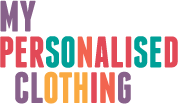Screen Printing vs. Digital Printing: What’s The Difference?
Both screen printing and digital printing, also known as direct to garment printing, are popular methods for creating clothing, as well as various other items. Each has its own properties that make it the perfect choice for printing garments, but they create different finishes and require alternate methods, so how are they different and which is best?
What is screen printing?
Screen printing is the method of creating a stencil design and transferring it onto the material beneath by pressing ink (or paint when it’s being used for artwork or on materials such as wood) through a fine mesh screen using a squeegee. The designs can be printed using just one shade of ink or various, but in the case of multicoloured designs, each of the colours used has to be applied in individual layers using a separate stencil for each ink. The benefit of screen printing is that it provides a long-lasting and professional finish and is a cheap way of achieving high volumes of printing like making a large batch of custom t shirts. However, it’s not the preferable option if you have a small order to fulfil due to the amount of time it takes to complete the process.
What is digital printing?
Digital printing works in the same way as a standard inkjet printer but instead of printing onto paper, it prints ink onto fabric. Digital printing is great for creating high-resolution prints, so it’s commonly used for reproducing detailed images. Digital printing is great for multi-colour designs without the need for hefty set-up or screen costs. It’s also brilliant for darker fabrics and provides a soft finish that really impacts the overall feel of the t-shirt if you’re printing larger designs.
How do they differ?
Digital printing uses specialised fabric printers to transfer to the image or text directing onto the material. There is no stencil with this method, like there is with screen printing, so multiple colours can be applied at once rather than in separate layers. This makes it great for intricate or highly colourful designs. There’s also very little set-up required with digital printing so it’s a more cost-effective method for single items or smaller batches.
However, because this form of printing uses CMYK-style dots of colour instead of solid blocks, it doesn’t achieve the same level of intensity that screen printing provides. Screen printing also allows for a more texturised effect that is preferable for certain designs.
